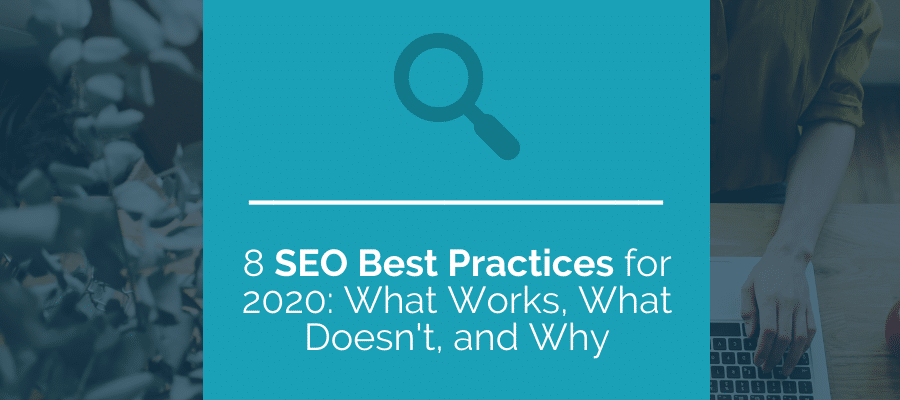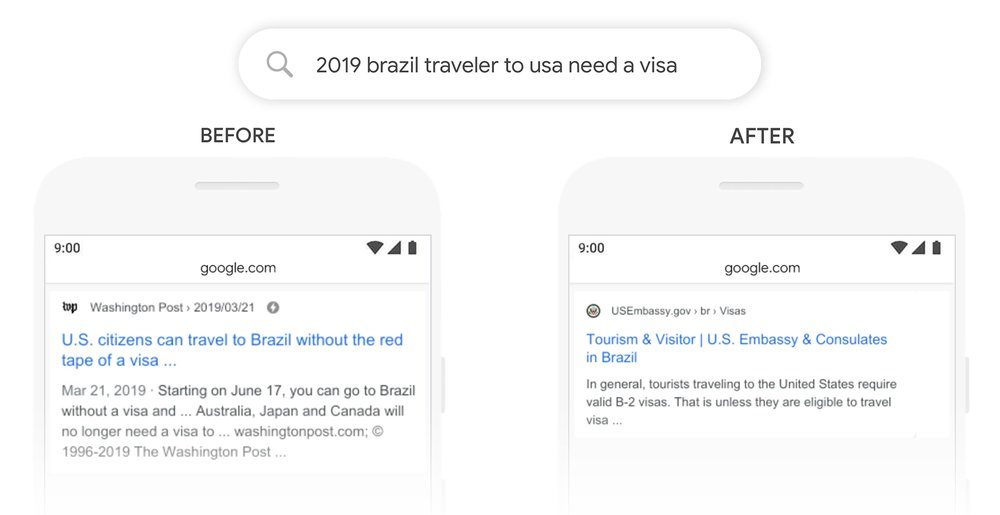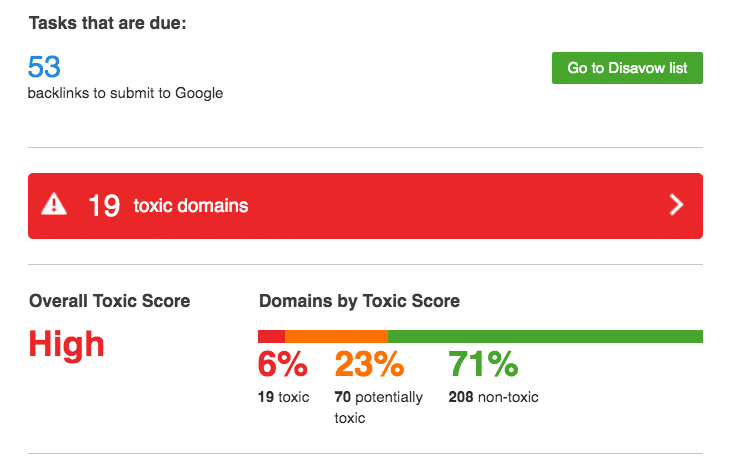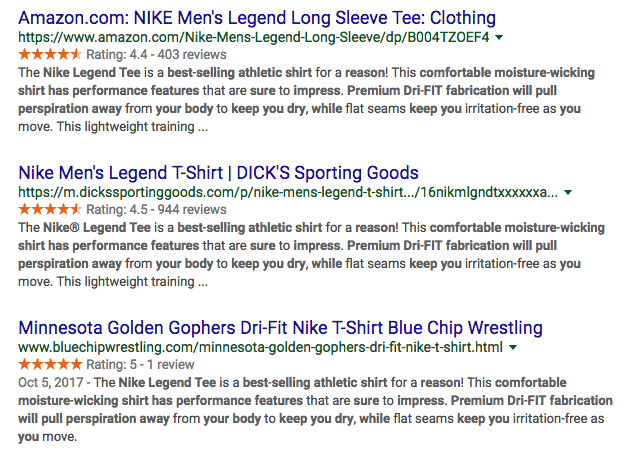
Search engine optimization (SEO) can be a tough subject. Search engine algorithms change constantly, which means SEO best practices also have to change for your content to be discoverable. Many bloggers, copywriters, and webmasters want to know; which SEO best practices actually make a difference? How much of a difference do they make? And do these strategies still work in 2020? In this blog post, we’ll discuss SEO best practices in 2020, and what you can expect from implementing them.
SEO Best Practices in 2020: What Works, What Doesn’t, and Why
First: How Google Works
To understand SEO, it’s important to first understand how search engines—most notably, Google—actually bring up results.
Crawlers: How Search Engines Find Your Content
Google, as well as Bing, Yahoo and other search engines, use crawlers to quickly and constantly comb the web for content. If your content isn’t crawled, it’s unlikely to appear on a search engine results page (SERP), since the search engine doesn’t really “see” it or know that it exists. But don’t worry—you don’t have to make a special request to get your content crawled. If your content is publicly available, crawlers will find it pretty quickly.
Algorithms: How Content Gets Selected and Organized
Once Google knows your content exists, a built-in algorithm determines whether or not your content appears on a search engine results page (SERP) when a user enters a search. With 1.7 billion websites online (that’s about 1 unique website for every 3 internet users on the planet), each containing dozens, even thousands of pages, that’s a lot of information to parse through. With 5 billion searches a day on Google alone, this algorithm has to work fast. In a fraction of a second, Google determines which pages—or images, or videos—are relevant to your search terms, which ones are best, and delivers them to you on a nice, neat SERP. Pretty amazing, when you think about it.

Google’s algorithm can bring up billions of results in a fraction of a second.
Google guards the details of their algorithm pretty closely, both to stay ahead of competing search engines and also to prevent webmasters and content creators from “tricking” the algorithm. However, they do provide some guidance when they make updates. SEO experts also perform studies to see which SEO best practices work and which don’t.
Learn more about how Google ranks your content, and how you can improve it:
Download the Ultimate Guide to Increasing Your Google Rankings »
Important Takeaways
You don’t need to know exactly how Google works—very few people do, in fact—to use SEO best practices in 2020. But, it’s important to remember the following:
- Google does not pick and choose results, or “fix” results to favor a particular group. With over 5 billion searches a day, that would be infeasible, even impossible.
- Search engine algorithms are not public, so SEO best practices are not black and white—there is some speculation involved.
- Google’s algorithm changes often. SEO strategies that worked five years ago might be meaningless today.
- Many different factors decide how content ranks. Individual strategies might not have much effect, but using SEO best practices as a whole can have a notable cumulative impact.
8 SEO Best Practices for 2020
1. Use Keywords Properly
A number of Google updates, including Hummingbird, RankBrain and BERT, helped the Google algorithm with semantic understanding—the meaning of words and how they fit together. This means Google is far beyond simply matching keywords in a query to keywords on a page. However, keywords are still an important part of SEO best practices. Google still needs to know what a content piece is about, and keywords play an important role.

Google offered this example of how semantic understanding affects a SERP. A better understanding of language helps Google provide results that better match a user’s intent.
While Google has gotten better at understanding synonyms and phrases with similar meanings, choosing the best keywords and using these keywords strategically in your content is still important. Here are some 2020 SEO best practices to keep in mind when it comes to keywords.
- Do keyword and topic research before writing. This ensures your audience is actually interested in your content, and you’re using the most logical terms to describe it.
- Use your keyword in your page title, various headings, image alt-text, meta description and URL, where possible.
- Don’t “keyword stuff.” Use your keyword three to four times in the body text, depending on length, but don’t over-do it.
Learn more about tools and strategies for improving and measuring SEO
Download the Ultimate Guide to Increasing Your Google Rankings »
2. Build Links and Domain Authority
The usefulness and trustworthiness of a website are measured by many SEO tools in a metric called Domain Authority. Though Google has never specifically mentioned Domain Authority as a part of its algorithm, it is clear that trustworthiness, reliability and detail all play a role in SEO. Links are an important part of this.
If a website links to yours, it’s a vote of confidence from that website to yours. With that in mind, it makes sense that web pages with lots of other sites linking to them could be seen as reliable and helpful. Furthermore, these links help visitors find your page. Working with other websites to build backlinks is a very important SEO best practice in 2020. However, there are some caveats (see points 3 and 4 below).
Outbound links—links that you use in your content to link to other sites—also play a role. Linking to reputable sites with helpful information shows that your information has sources. This is another signal that your content is reliable, and therefore should rank higher.
3. Avoid Link Exploitation
Generally, links are a good way of determining which web pages are helpful and, therefore, should appear higher in search results. However, this also introduces a loophole. A company which owns several websites and thousands of pages could easily generate backlinks for any site they wanted by simply including a link in the header or footer of their other webpages. This gives big businesses an unfair advantage in the search landscape, allowing them to produce lower-quality content whilst winning top SERP spots (which are generally worth at least as much as the ad spots other businesses pay hundreds or thousands for).
Google has attempted to solve this by changing the value of links based on their position and anchor text. Links in the body text of a page will be more valuable than those in a header or footer, for example. Also, links with descriptive, accurate anchor text will rank better. However this problem is difficult to solve and remains an issue.

This toxic domain report from SEMrush shows risk of an SEO penalty, and recommends disavowing links from potential spam sites.
4. Disavow Spam Links
Not all links will actually improve your SEO. Links from spam sites will actually hurt your rank. Luckily, you don’t have to accept votes of confidence from these types of sites. By disavowing a link, you’re refusing this disreputable site’s vote of confidence. The link will still lead to your site, but disavowing tells Google’s algorithm to ignore the connection. Tools like SEMrush will give you a link report showing any links you should disavow, or you can do this yourself. Since links are an important part of SEO, use this strategy with caution.
5. Create Detailed Content
At one point, having about 600 to 800 words on a page was considered ideal. This SEO best practice has changed in 2020. Studies show that longer content tends to perform better. A study by Backlinko found that, on average, sites appearing on the first page of a SERP contain about 1,900 words. However, there are some caveats.
Keep in mind that this is only one of many SEO factors. The type of page you’re working with also makes a difference. Having 1,900 words on your homepage, for example, will probably overwhelm your visitors, and cause them to click away, ultimately hurting your SEO. However, a 1,900-word informational blog post will probably cover a topic in depth and detail, which is what a visitor is probably looking for from that type of content. Of course, adding content just to meet an ideal length won’t help anyone, and won’t help your SEO either.

Duplicated product descriptions like this one are a common cause of SEO penalties.
6. Avoid Duplicate content
If you’ve written a great blurb about your company or an exceptional product description, it’s tempting to use this across your site, or share it with other sites you operate. However, duplicate content can have negative SEO effects. Copying a few phrases won’t have much impact, but a lot of verbatim duplication is generally a bad idea, especially across different domains. Duplicate content will compete on the same keywords, and it doesn’t offer new or valuable information to users, and therefore confers little value to Google. If you’re sharing a blog post or other content with another site or another page on your own site, use a canonical tag to show Google which is the original.
7. Format Correctly
Consider how a search engine crawler “reads” a page. It can’t scan the text with its eyes like most users do. Instead, it reads the code on a page. This code tells the program where things like headings, links, italicized text, bullet lists, and other features exist. Algorithms are programmed to interpret each of these features differently. For example, a heading is considered a brief synopsis of the following paragraph. Smaller headings below it indicate topics within the topic.
Correct formatting allows search engine crawlers to interpret the page and its content correctly. There are many aspects to this, but the following are generally SEO best practices to keep in mind when it comes to proper formatting:
- Use headings logically: Use H1, H2, H3 etc. tags to signal headings in proper order.
- Bulleted and numbered lists: Capture groups of related information in bulleted or numbered lists. This can also help to win valuable Featured Snippet spots in Google.
- Bolt and italicized text: Bold and italicized text in your body content should be used to convey meaning, not as a decoration or to imitate a heading.
8. Optimize Website Functionality
If your website lags, bombards visitors with popups, or annoys them with automatically playing ads or music, they aren’t likely to stay on your site. High bounce rates are bad for SEO, so a modern and functional website is an important part of your SEO best practices. Keep the following in mind:
- Optimize your site loading speed
- If you use pop-ups, make sure they activate only after a user scrolls a bit down the page
- Make the button to dismiss a pop-up clear and obvious
- Don’t use automatically playing audio
- Make sure your site is easy to navigate and use
- Use a modern site design
- Make sure your text has adequate contrast and size
These are not the only factors that decide how well your content ranks, but these are some of the easiest SEO best practices to implement. Overall, it is important to remember that Google wants to give users the most useful and relevant information possible. If your website is slow, clunky, and disorganized, or your content is inaccurate, unreliable or hard to read, users won’t like it and Google won’t rank it. Ultimately, aim to make your content helpful, informative, and original. This will give you the best odds of ranking well on a given search.

